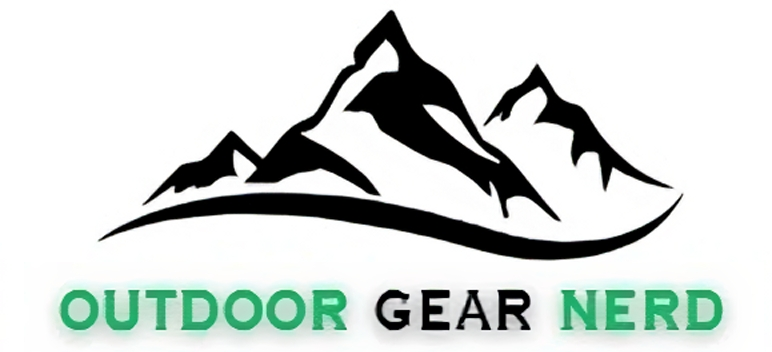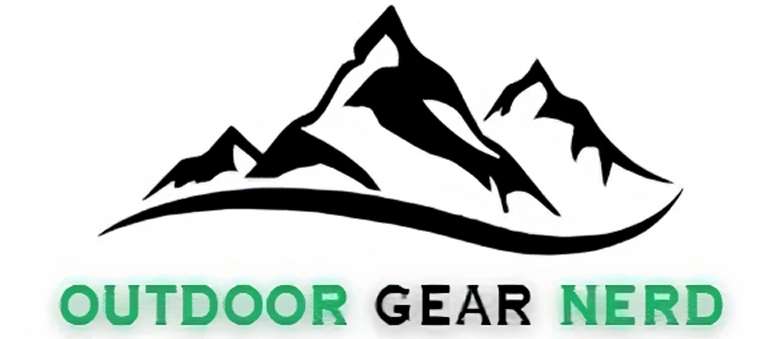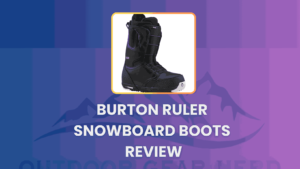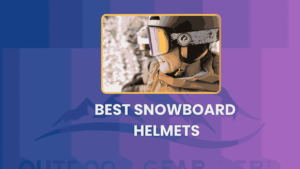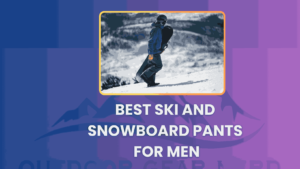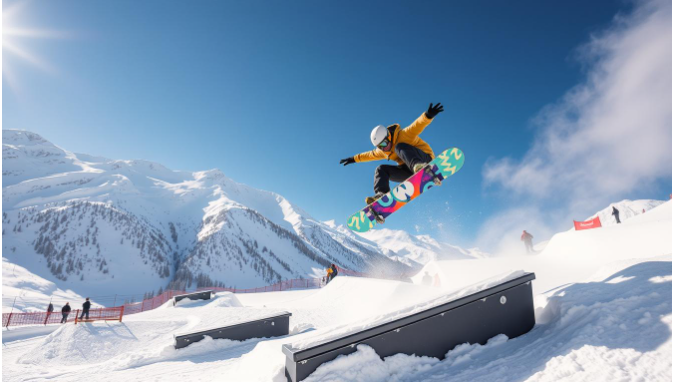
Can You Ride a Freestyle Snowboard For All Mountain?
The snowboarding world is always changing. Now, people are curious about using freestyle boards for all-mountain riding. These boards were made for the terrain park, where riders do cool tricks. But, with new technology, can they handle the mountain too?
This article will look into if freestyle snowboards can handle the mountain. We’ll check out their design and how they work on different terrains. By the end, you’ll know if a freestyle board is good for mountain adventures.

Key Takeaways
- Freestyle snowboards are designed primarily for the terrain park, but their versatility extends beyond these boundaries.
- Factors like twin-tip design, flex patterns, and core construction contribute to the all-mountain capabilities of freestyle boards.
- Freestyle boards offer advantages in various terrain types, but also have some performance limitations to consider.
- Adapting your riding style can help maximize the versatility of a freestyle board in different mountain conditions.
- Understanding the trade-offs between freestyle and all-mountain boards can help you make an informed decision for your riding style and preferences.
Understanding Freestyle Snowboard Design Features
Freestyle snowboarding relies heavily on the board’s design. The twin tip shape, flex patterns, and core construction all matter. Each feature is designed to improve the rider’s experience on the mountain.
Twin Tip Design and Its Benefits
The twin tip design is key to freestyle snowboards. It has the same shape at both ends, making it easy to switch stances. This design also boosts the board’s park and jib skills, helping with switch tricks and riding backwards.
Flex Patterns in Freestyle Boards
Freestyle snowboards are softer and more flexible than others. This makes them easy to press, ollie, and control. The flex can vary, with some boards stiffer for stability and others more flexible for a playful feel.
Core Construction and Materials
The core of freestyle snowboards is usually made of wood or foam. These materials make the board light and easy to handle. Adding carbon fiber or fiberglass makes the board even more lively and responsive.
Knowing about freestyle snowboard design helps riders appreciate their board’s performance. Whether in the terrain park or all-mountain, these boards offer great versatility.
The Versatility of Modern Freestyle Snowboards
The world of snowboarding has changed a lot, thanks to freestyle board technology. Now, adaptable snowboards can handle many different multi-terrain riding conditions. This change has opened up new ways for snowboarders to enjoy the mountain.
Design improvements have made freestyle snowboards more versatile. Twin-tip designs and better flex patterns help these boards perform well in various places. They can handle everything from smooth runs to deep powder.
- Twin-tip designs make it easy to switch between riding forward and backward. This helps riders move through different terrain smoothly.
- Improved flex patterns make the boards more responsive and stable. This means they work well in different snow conditions and riding styles.
- New core construction and materials have made freestyle snowboards even better. They keep performing well in different mountain settings.
Thanks to these design changes, snowboarders can do more on the slopes. Adaptable snowboards let riders easily move between park features, groomed runs, and off-piste areas. They adapt to each place’s needs.
“The versatility of modern freestyle snowboards has transformed the way we experience the mountain. They’ve become an indispensable tool for the adventurous snowboarder, unlocking new realms of exploration and expression.”
With freestyle board technology getting better, the fun of multi-terrain riding is growing. Snowboarders can now ride the whole mountain with confidence. They mix park tricks with all-mountain skills, pushing the limits of what’s possible on snow.
Can You Ride a Freestyle Snowboard for All Mountain?
Freestyle snowboards are known for their skills in the terrain park. But, they also work well for all-mountain riding. They offer special benefits in different types of terrain.
Advantages in Various Terrain Types
Freestyle boards are easy to move around with. They help riders go through tight spots, between trees, and make sharp turns. This makes them great for all kinds of terrain, from smooth runs to bumpy areas.
Performance Limitations to Consider
Freestyle boards are good for some all-mountain riding but not all. They might not handle high speeds well or grip icy slopes. Their soft flex helps in the park but can make them less stable at fast speeds.
Adapting Riding Style for Different Conditions
- Riders need to change how they ride a freestyle board for all-mountain. They should adjust their stance, edge control, and weight to fit the terrain.
- In powder, stay centered to keep the board up. On hard snow, lean forward to keep grip and stability.
- Changing your riding style is crucial to get the most out of a freestyle snowboard on all-mountain.
Knowing what freestyle boards can and can’t do helps riders choose the right gear. It also helps them adjust their riding technique for different terrains. This way, they can improve their all-mountain performance.
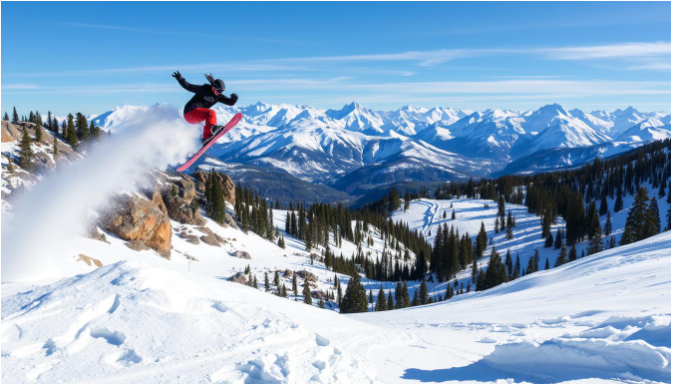
Comparing Freestyle vs. All-Mountain Boards
Choosing between a freestyle and an all-mountain snowboard can change your snowboarding experience. It’s important to know the differences between these snowboard types. This helps you pick the right board for your riding style and the terrain you’ll be on.
Freestyle snowboards are made for park and trick riding. They have a twin-tip shape for easy switch riding and tricks. These boards are soft and playful, perfect for riders who love style and creativity.
All-mountain snowboards are for riding on different terrains and conditions. They have a directional shape and a stiffer flex for better edge hold and stability. These boards are great for carving turns and exploring various terrains.
| Feature | Freestyle Snowboard | All-Mountain Snowboard |
|---|---|---|
| Shape | Twin-tip | Directional |
| Flex Pattern | Softer | Stiffer |
| Riding Preferences | Park and trick-focused | All-terrain versatility |
Choosing a freestyle board for all-mountain riding might not be the best idea. Freestyle boards may not handle high speeds or tough off-piste conditions well. On the other hand, all-mountain boards might not be as playful as freestyle boards.
The decision between a freestyle or all-mountain snowboard depends on your riding style and the terrain you’ll ride on. Knowing the design and performance of each board helps you make a choice that improves your snowboarding experience.
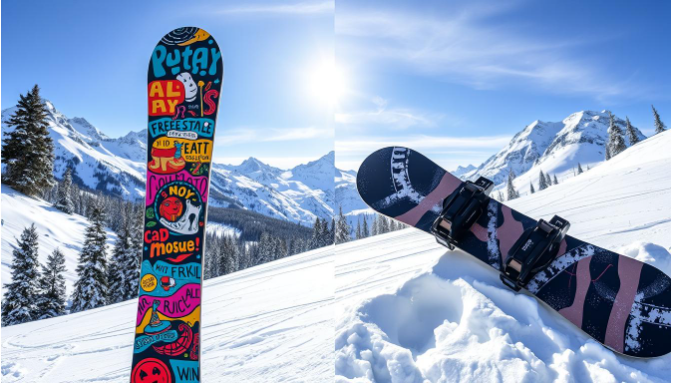
Terrain Park Performance and Beyond
The terrain park is where freestyle snowboarding truly shines. Freestyle boards are made to excel in this area. They offer unmatched abilities for riders who want to explore new limits.
Jump Line Capabilities
Freestyle snowboards are perfect for big jumps. Their twin-tip design and flexible build let riders do cool tricks. These boards help riders land smoothly, making even tough moves look easy.
Rail and Box Features
But freestyle boards do more than just jump. They’re great on rails, boxes, and other features. Their light build and sharp edges let riders slide and grind with ease, showing off their skills.
Powder Riding Potential
Freestyle boards also do well in powder. Their twin-tip design and rocker profiles help riders float in deep snow. This makes carving through powder and exploring off-piste areas a breeze.
Freestyle snowboards are perfect for anyone looking to improve their terrain park tricks, master snowboard jumps, or enjoy the mountain’s powder performance. They’re versatile and can help you reach new heights in your riding.

Speed and Stability on Groomed Runs
Freestyle snowboards are great for carving and staying stable on groomed slopes. They’re made for the terrain park but work well on groomers too.
Their twin-tip design helps riders control speed and direction. This shape keeps the board stable, whether you’re going forward or backward. The boards’ flexible build makes them easy to maneuver and hold an edge well.
| Feature | Freestyle Snowboard | All-Mountain Snowboard |
|---|---|---|
| Carving Performance | Excellent edge hold and responsiveness | Good edge hold, but less responsive |
| High-Speed Stability | Excellent stability due to twin-tip design | Good stability, but may be less forgiving at high speeds |
| Groomed Slope Riding | Highly capable, with precise control and maneuverability | Capable, but may require more effort to maintain control |
Modern freestyle snowboards are amazing. They go from the terrain park to groomed slopes smoothly. They offer top-notch carving and stability at high speeds.
All-mountain boards are good for groomed runs too. But freestyle snowboards edge out in carving and speed control. They’re perfect for riders who love to push their limits on groomers.
Freestyle snowboards are great for fast turns and mastering carving. They give you the stability and response you need to ride groomed slopes confidently.
Powder Performance with Freestyle Boards
Many riders wonder if freestyle boards can handle deep snow. The answer is yes. Modern freestyle snowboards float and stay stable in powder, just like dedicated powder boards.
Float Characteristics
Freestyle boards have a tapered shape and rocker profile. This helps them float in deep snow. Their wider nose and narrower tail act like a surfboard, keeping them on top of the powder.
The rocker in the tip and tail also helps them stay afloat. This design makes freestyle boards great in powder.
Technique Adjustments for Deep Snow
- Shift your weight to the rear of the board to keep the nose elevated and prevent it from diving into the snow.
- Maintain a centered, balanced stance to distribute your weight evenly and maintain control.
- Employ a smooth, flowing riding style with gradual turns and minimal edge engagement to avoid catching an edge in the powder.
Stance Considerations
Adjusting your stance adjustments can improve your ride in powder. Try widening your stance for more stability. Experiment with a centered or slightly forward stance for better float and control.
With the right technique and stance, freestyle snowboards offer an exciting powder experience. You can float in deep snow and explore the mountain with confidence.
“Riding a freestyle board in powder is all about finding the right balance between playfulness and control.”
Edge Control and Carving Ability
Freestyle snowboards are key for all-mountain riding. They offer great edge control, making turns on groomed runs easy. Their twin-tip shape and flexible build help with smooth edge transitions.
These boards grip the snow well during fast turns. Their sharp edges and light, easy-to-manage design are perfect for carving. Riders can make smooth turns and carve confidently, even on hard snow.
But, freestyle boards might struggle on steep, icy slopes. Riders might need to change their stance and weight to keep control. With practice, they can still enjoy a fun all-mountain ride.
FAQ
Can you ride a freestyle snowboard for all mountain?
Yes, modern freestyle snowboards are great for all-mountain riding. They offer more than just park performance. Thanks to new designs and materials, they handle different snow and terrain well.
What are the key design features of freestyle snowboards?
Freestyle snowboards have a twin tip design and special flex patterns. Their core materials help them perform well. These features make them versatile and easy to handle in various conditions.
How have modern freestyle snowboards become more versatile?
New tech in snowboard design has made freestyle boards more versatile. They can now handle different mountain terrains. Improvements in materials and shape have boosted their performance beyond terrain parks.
What are the advantages of using a freestyle snowboard for all-mountain riding?
Freestyle snowboards are good for different terrains. They offer better maneuverability and stability at high speeds. They also adapt to various conditions. But, they have some limitations for all-mountain riding.
How do freestyle and all-mountain snowboards differ in design and performance?
Freestyle and all-mountain snowboards are different. All-mountain boards are better for high-speed carving and stability on groomed runs. Freestyle boards are great in terrain parks and versatile in various conditions.
How do freestyle snowboards perform in terrain parks and beyond?
Freestyle snowboards are made for terrain parks. They have features for jumps, rails, and boxes. These skills also help in all-mountain riding, letting riders use their freestyle skills on the whole mountain.
How do freestyle snowboards handle speed and stability on groomed runs?
Freestyle boards are known for their fun and playfulness. They can also handle speed and stability on groomed runs. Their design, like sidecut and edge hold, makes for a smooth ride at high speeds.
How do freestyle snowboards perform in powder conditions?
Freestyle snowboards can handle powder well. They have features for float and technique adjustments. While not as good as powder boards, modern designs still offer a good experience in deep snow.
